Big Mountains + Bigger Sky of Country NSW
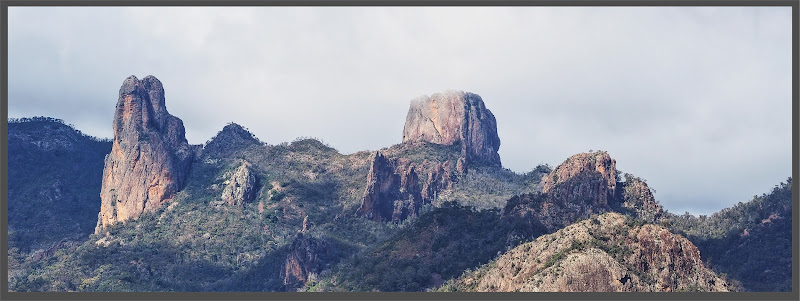 One
of the few benefits of the strange new world we find ourselves living
in, is that working from home has become the norm. Which is how I found
myself on a Friday working from "home" in the passenger seat of Tiguan
as we hit the highway heading North in search of some big mountains.
One
of the few benefits of the strange new world we find ourselves living
in, is that working from home has become the norm. Which is how I found
myself on a Friday working from "home" in the passenger seat of Tiguan
as we hit the highway heading North in search of some big mountains.
__
Mount Kaputar National Park
The
drive was fairly uneventful - big stretches of nothing, with fields and
open-cut mines dotted every now and then and the occasional little
country town with their highstreets that look like time has stood still
for the past 100 years. Perception of distance is different out here.
You stop counting the kilometres and just pass the time looking at the
changing landscape. The plan was to just keep driving until we got to
Mount Kaputar National Park but we were treated to the back end of an
East coast low, and the driving rain slowed our progress and eventually
got the better of us, finally admitting defeat and spending the night in
the back of Tiguan, at a truck stop just outside Gunnedah.
The
next morning we were up and back on the road before sunrise, watching
the clouds change colour on the horizon as kangaroos stuffed their faces
on the green of the roadside verge. We watched the temperature drop as
we wound our way up the narrow road into the national park, the mist and
dew hanging off the mountain gums, occasionally dripping onto the car
windscreen with a big splat. We parked up and brewed a quick coffee
before walking out to Governor’s lookout where we were greeted by a
blanket of white. After all that driving, it was a total white out and
we couldn’t see more than a few metres in front of us. But as we stood
there, the wind changed, and suddenly, piercing through the white was
the peak of a volcanic monolith, glinting in the sunshine. Within
minutes, the mist and cloud had completely disappeared and we were
standing at the edge of the mountain, high above the plains, staring
down at the steep ridges and narrow valleys of the wild landscape of the
Nandewar Range below us. This is why I love big mountains. They give
you that sense of scale and remind you that we are just a tiny part of
this big ol’ world we live in.
In what was incredible timing, we
only had 5 minutes of staring in awe at this weather eroded landscape
before the cloud came back in, and suddenly everything we had been
looking at was gone again, and we stood there engulfed in white,
droplets of mist condensing on my hair and jacket.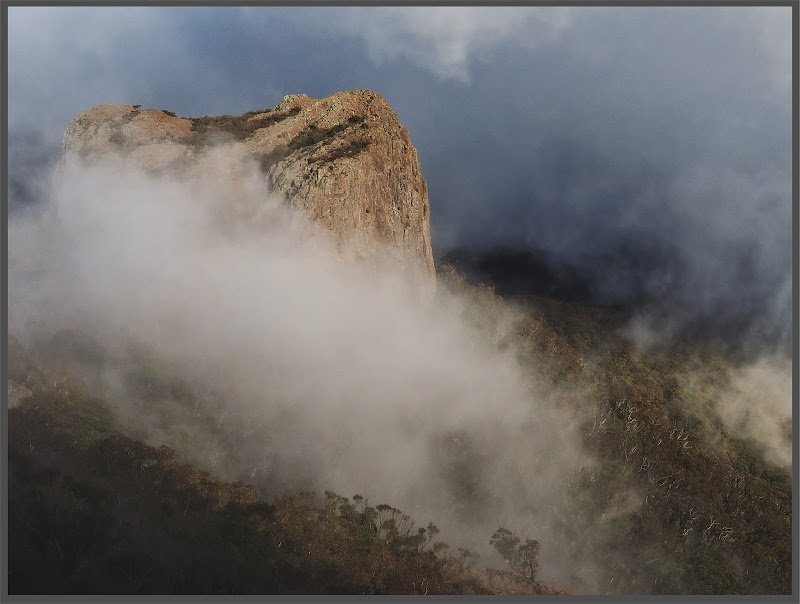
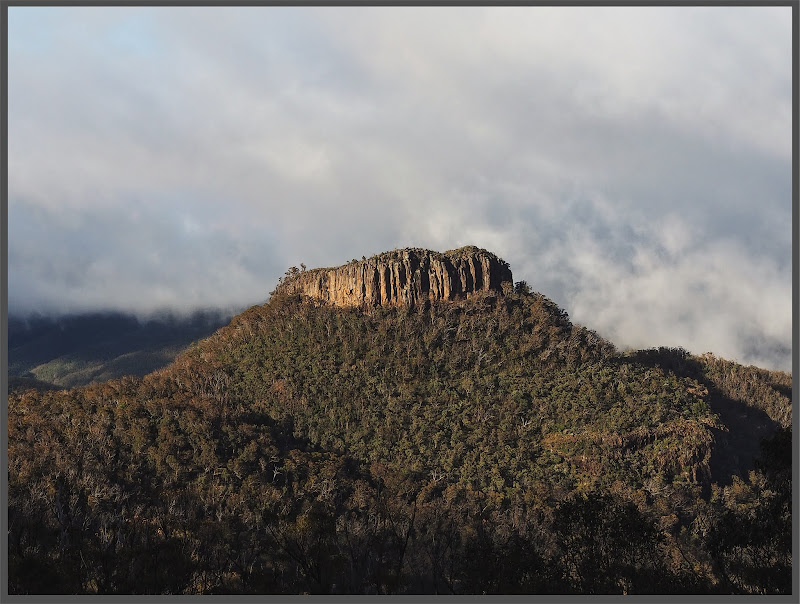
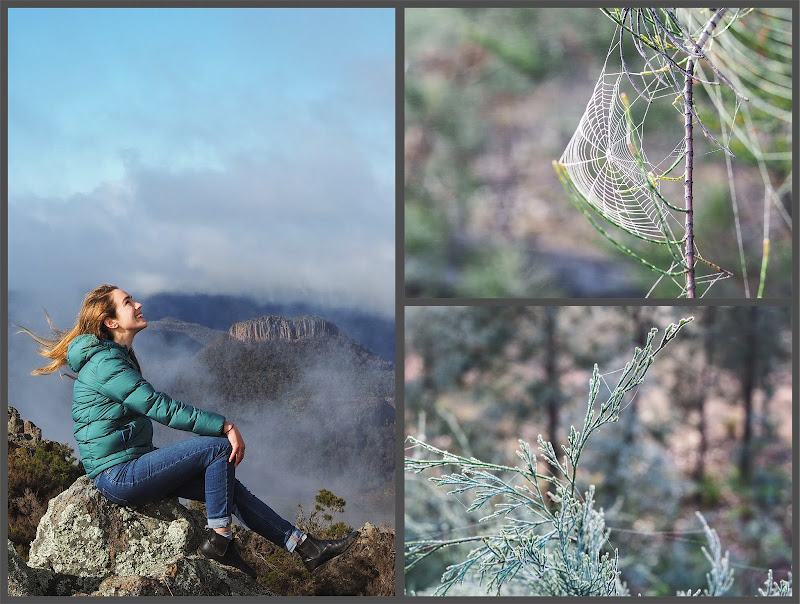
Pilliga National Park
From Mount Kaputar, we had a vague idea of going to see the Bilbies in Pilliga National Park after reading about the project Australian Wildlife Conservancy
has undertaken to reintroduce the species. We knew chances of actually
seeing one in the wild were slim but ever the optimists we jumped in the
car and headed further west in search of this iconic Australian
marsupial with its little pointed snout.
Pilliga National Park is
that beautiful combination of ochre coloured earth, white Cypress Pine
and green Eucalpyt forest. Driving the dirt roads brought back memories
of our last trip out this way, and it felt good to be nice and dusty
again! Last time we were in the outback, NSW was right in the middle of a
terrible drought and we were surrounded by a lot of death. Skeletons of
animals lined the roads and walking tracks, trees had shed their leaves
in hope of survival and the earth was parched and cracking. This time
around, it was so amazing to see the greenery back and bright pockets of
yellow Wattle lined the roads. That being said, the effects of the
drought were still noticeable, many of the trees were still recovering
and driving at dawn and dusk was a quiet affair with not many animals
around.


We
pulled into the Salt Caves and climbed the fire tower for views over
this expansive landscape. We could see right back to the mountains of
Kaputar where we’d been and to the Warrumbungles, where we were headed.
The Salt Caves no longer exist after collapsing in the 1930’s, but there
are incredibly emotive descriptions of these immense salt columns
hanging like stalactites and wild animals going there to lick them.¹
Heading
deep into the Pilliga Forest to camp at Dandry Gorge, we got caught in a
rogue heavy downpour and spent a couple of hair-raising kilometres
fishtailing our way through several creek beds which had started to fill
up. But by the time we pulled into camp right on sunset, the rain had
stopped and all was left was that beautiful fresh smell of damp earth
and Eucalyptus. It was a quiet night in camp, just us and the first few
stars that twinkled their way through the treetops. We sat around the
fire, watching the shadows grow long as the chill of night set in.
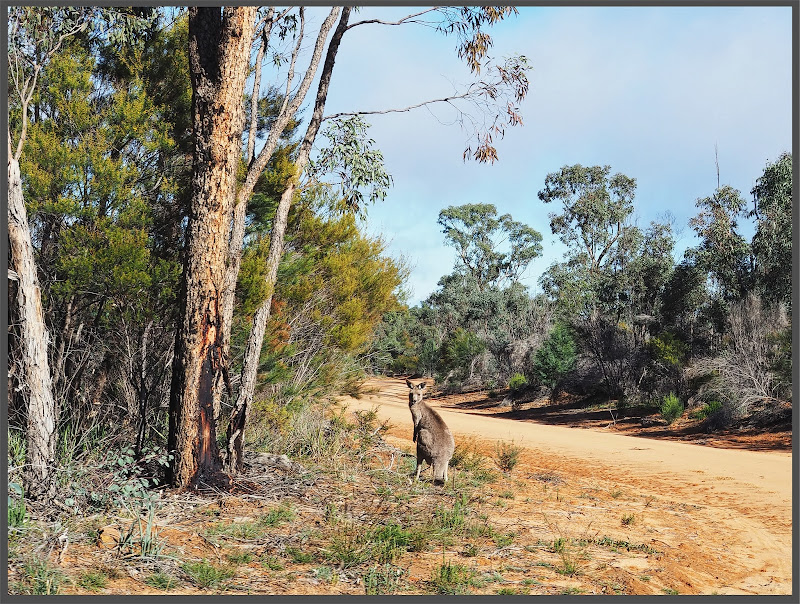
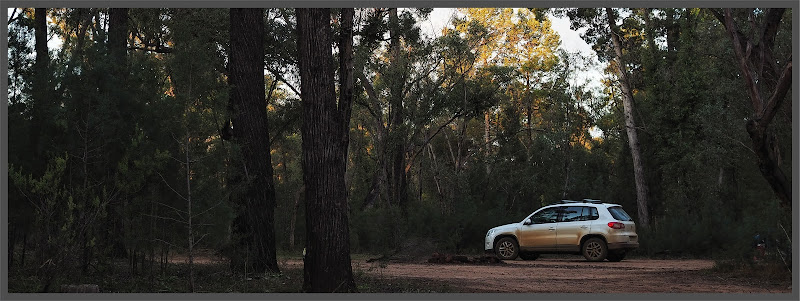
Warrumbungle National Park
In
the early morning frost and on roads slightly too soft for comfort
after the rain, we headed out of Pilliga and towards the Warrumbungles. I
always love learning the stories behind these wild and ancient places
and there's at least 17 million years of history and culture embedded in
this one. Initially formed by an undersea volcano and then eroded
through time, the Warrumbungles are a spiritual place for the Gamilaroi,
the Wiradjuri and the Weilwan people - the custodians of this landscape
for tens of thousands of years. From the moment you enter the park, you
can feel the sacred significance of this place in the wilderness and
jagged summits that encircle you. Warrumbungle is a Gamilaroi word
meaning “crooked mountain”, and I think we can all agree it’s a pretty
perfect description of this rugged terrain.
With cold fingers we
double knotted the laces on our hiking boots and started stomping the
trail up to the Breadknife, one of the park’s most iconic formations.
The weather was dreadful, intermittent rain showers and clouds pursuing
us for the majority of the steep climb and we wondered whether we’d even
get a view from the top. After one final rock scramble, we were
standing there amongst those volcanic spires we had been looking at from
afar for the last few days. I might as well have been on top of the
world because that's how I felt staring down on that Jurassic looking
landscape of ancient Australia. The summit was freezing but magical,
wind whipping around me and the sun occasionally peeking out of the
clouds, hitting those jagged rocks with specks of gold.
All the day trippers had cleared off and we were alone on the mountain trying to decide whether to hike somewhere for sunset despite our tired legs and the gathering clouds, or call it a day and head to camp. We decided to chance it, and after a short sharp hike we emerged at the summit of Fans Horizon to a dark sky and the ghostly silhouette of those famous peaks. It was eerily silent, not a breath of wind. What happened next is almost indescribable but i’m going to try to put some words together that do justice to what I felt standing there. Out of nowhere, the skies opened and we were pelted with hail. HAIL. Thousands of icy balls bouncing off our heads and the surrounding rocks, the sound echoing throughout the valley. Before we even had the chance to run for shelter the light on the rocks changed - everything started to glow and we knew we were in for something special, but we still had no idea what a show mother nature was about to put on. With hail still bouncing around us, everything started to glow pink and a huge rainbow formed, slowly being painted across the sky in an arc which encompassed the whole Warrumbungle range. In that moment we forgot everything, the hail, the cold, the fact that we were soaked through. We just stared, eyes comically large and mouths open trying to drink it all in.


The
scale and geology of the Warrumbungles makes it one of the most
impressive places I've hiked. There was so much to see, and we ended up
hiking 36km in as many hours, leaving with sore legs but happy souls.
Dark Skies
I
don’t think there is a greater joy in life than being able to peer out
of your sleeping bag in the middle of the night to a sky filled with
stars. The Warrumbungles is Australia’s first Dark Sky Park, set up to
protect the night sky from light pollution. Having planned the trip
around the new moon to maximise star brightness, we spent every night
gazing upwards, getting lost in the celestial wonder above us. With 80%
of the world living under light polluted skies, being able to see the
Milky Way is really special, and I think we need to keep reminding
ourselves of that.
There
are occasions when I just don’t know what Google Maps is thinking. On
our homeward journey, what should have been a fairly straightforward
route, ended up with Tiguan driving through a field of sheep, their
confused little faces looking up at us as we trundled past, flicking mud
onto the underside of the car. When the next instruction was “turn
sharp right” into a river, we knew we were pretty lost.
Eventually
finding our way back to the main road (no thanks to Google), we drove
past endless fields of golden Canola, a comforting reminder after the
last few cold nights that Spring was definitely on its way. Windows
down, hair flying with the wind, we rounded a corner and got our final
taste of country NSW, as we got caught in a traffic jam of 200 cattle.
A
trip like this, to me is what happiness looks like. There are 5am wake
ups, icy cold, headlamp on, wriggling out of sleeping bags to brew a
coffee as the world gets lit up with reds and oranges at the first sign
of sunlight. Sore legs, hitting the trail, stomping up the mountain,
then finally, at the summit, standing there breathless. Long dusty
drives, lone camp spots, peace and quiet, wide open spaces and endless
starry skies.
This is what happiness looks like.


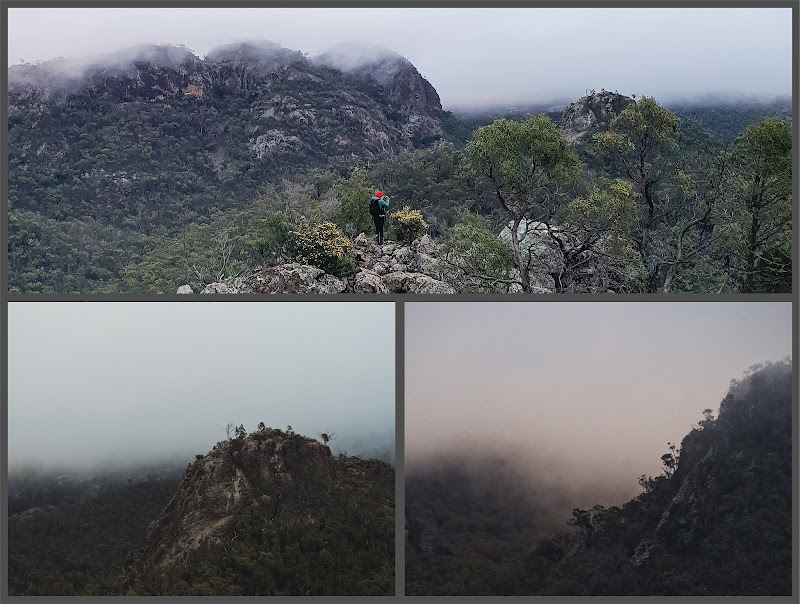

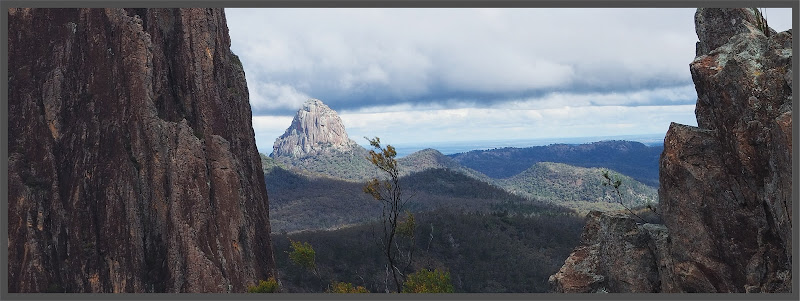
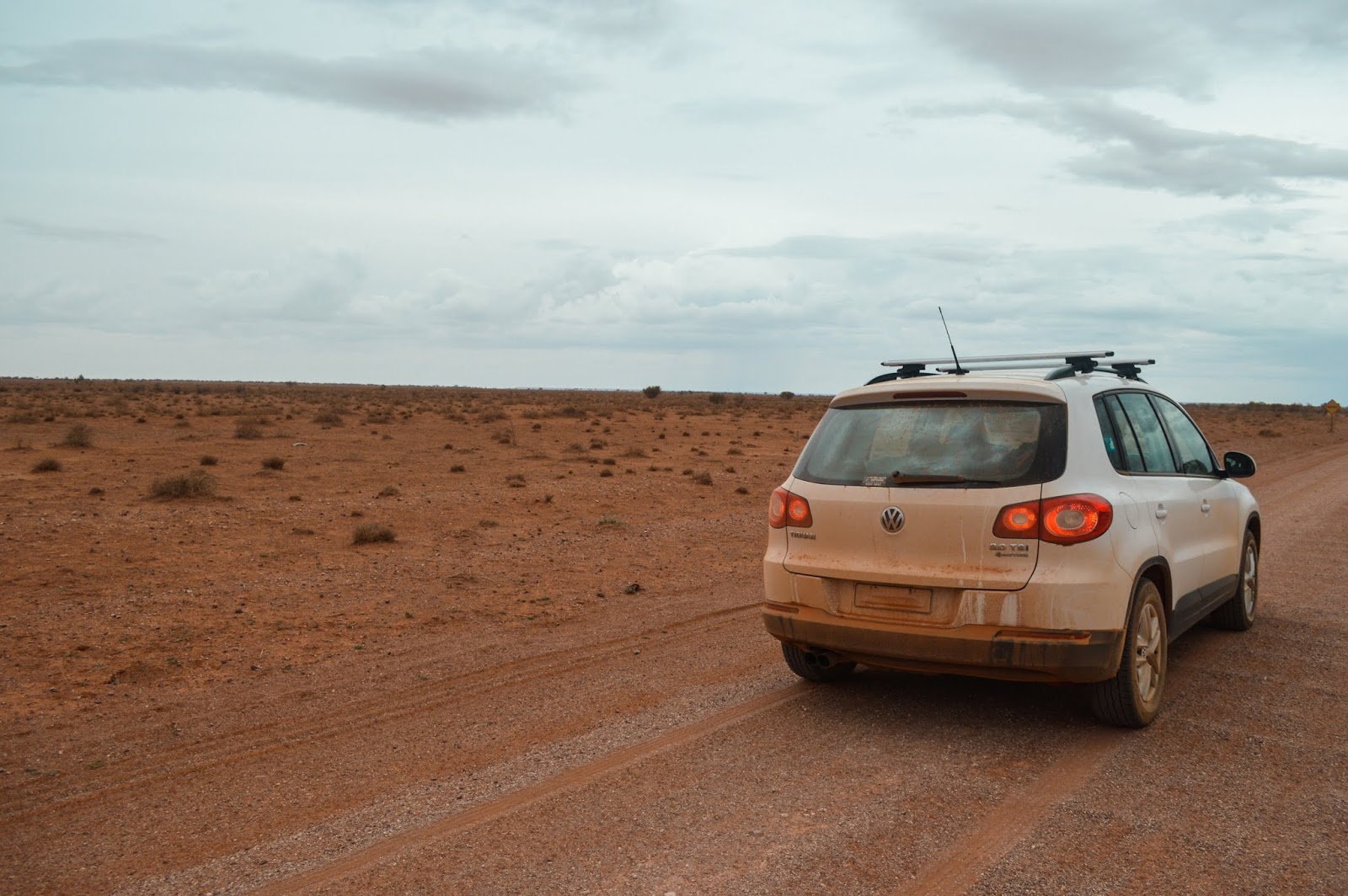
Loved reading this and seeing the pix. Made me feel like I was in the car fishtailing and up the hill being pelted with hail. Sort of good - I think!
ReplyDeleteThanks Craig for your kind words!! Makes me very happy that people other than my mum enjoy reading these posts...!
Delete